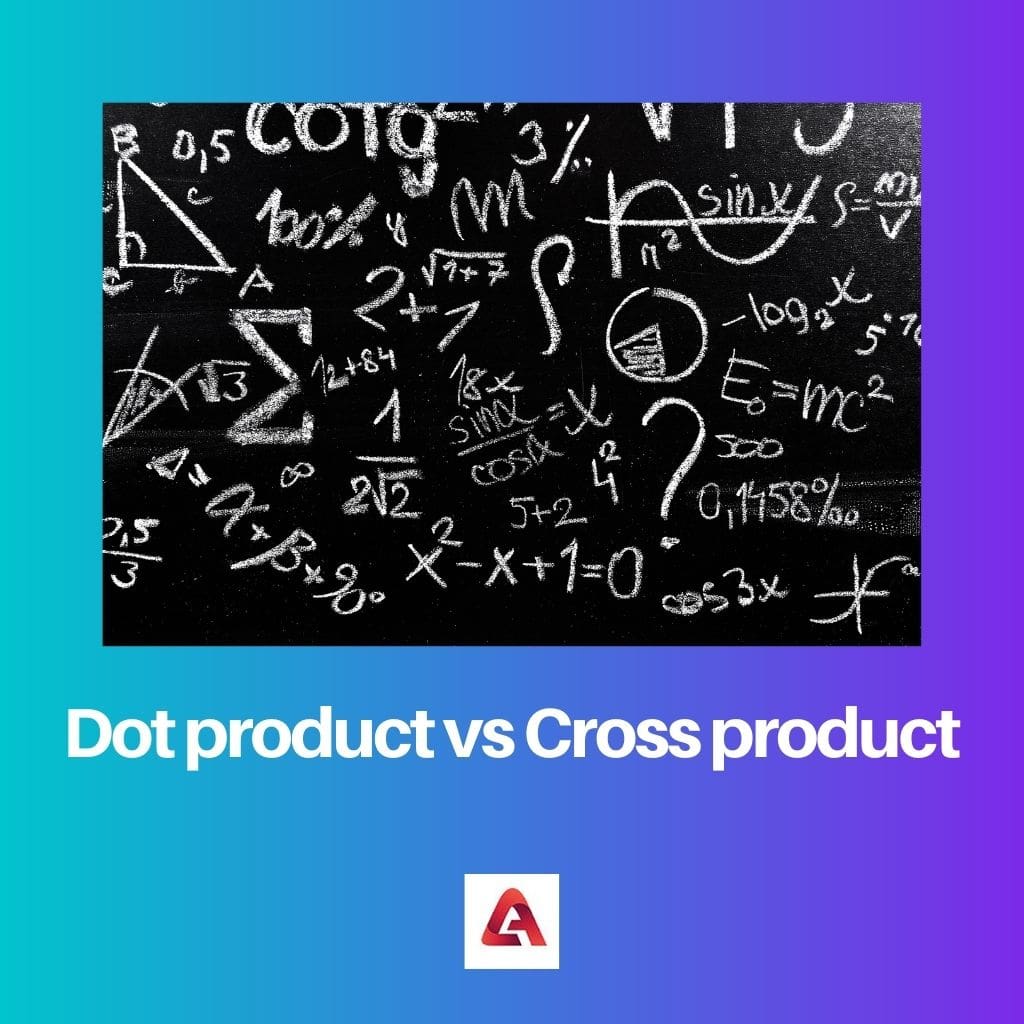Vector algebra is an integral part of Physics and Mathematics. It simplifies calculations and helps analyse a wide variety of spatial concepts.
A vector can be manipulated using two basic operations. These operations are the dot and cross products, with vast differences.
Key Takeaways
- Mathematical operation: Dot product calculates the scalar product of two vectors, while the cross product computes the vector product.
- Result: Dot product yields a scalar quantity, while cross product produces a vector.
- Orthogonality: Dot product is zero when vectors are orthogonal, while cross product results in a vector perpendicular to the original vectors.
Dot Product vs Cross Product
The difference between the dot product and the cross product of two vectors is that the result is a scalar quantity, whereas the development of the cross product is a vector quantity.

A dot product of two vectors is also called the scalar product. It is the product of the magnitude of the two vectors and the cosine of the angle that they form with each other.
A cross-product of two vectors is also called the vector product. It is the product of the magnitude of the two vectors and the sine of the angle that they form with each other.
Comparison Table
| Parameter Of Comparison | Dot Product | Cross Product |
|---|---|---|
| General Definition | A dot product is the product of the magnitude of the vectors and the cos of the angle between them. | A cross product is the product of the magnitude of the vectors and the sine of the angle that they subtend on each other. |
| Mathematical Relation | The dot product of two vectors A and B is represented as: Α.Β = ΑΒ cos θ | The cross product of two vectors A and B is defined as Α × Β = ΑΒ sin θ |
| Resultant | The resultant of the dot product of the vectors is a scalar quantity. | The resultant of the cross product of the vectors is a vector quantity. |
| Orthogonality of Vectors | The dot product is zero when the vectors are orthogonal ( θ = 90°). | The cross product is maximum when the vectors are orthogonal ( θ = 90°). |
| Commutativity | The dot product of two vectors follows the commutative law: A. B = B. A | The cross product of two vectors does not follow the commutative law: A × B ≠ B × A |
What is Dot Product?
A dot product or scalar product of two vectors is the product of their magnitudes and the cosine of the angle subtended by one vector over the other.
It is represented as :
A·Β = |A| |B| cos θ
The result is a scalar quantity, so it has only magnitude but no direction.
We take the cosine of the angle to calculate the dot product so that the vectors align in the same direction. This way, we obtain the projection of one vector over the other.
For vectors with n dimensions, the dot product is given by :
A·Β = Σ α¡b¡
The dot product has the following properties :
- It is commutative.
Α· b = b·α
- It follows the distributive law.
Α· ( b+c) = α·b + α·c
- It follows the scalar multiplication law.
( λα) · ( μb) = λμ ( α· b)
What is Cross Product?
A cross product or the vector product of two vectors is the product of their magnitudes and the sine of the angle subtended by one over the other.
It is represented as :
A×Β = |A| |B| sin θ
The result is another vector quantity. The resultant vector is perpendicular to both vectors. Its direction can be determined using the right–hand rule.
The following rules are to be kept in mind while calculating the cross-product:
- I × j = k
- J × k = i
- K × I = j
I, j, and k are the unit vectors in the x, y, and z-direction, respectively.
The cross-product has the following properties :
- It is anti-commutative.
a× b = – (b × α)
- It follows the distributive law.
a × ( b+c) = α × b + α × c
- It follows the scalar multiplication law.
( λα) × ( b) = λ ( α × b)
Main Differences Between Dot Product and Cross Product
The dot product and the cross product allow calculations in vector algebra. They have different applications and different mathematical relations.
The main differences between the two are :
- If two vectors are orthogonal, their dot product is zero, whereas their cross product is maximum.
- The dot product follows the commutative law, whereas the cross product is anti–commutative.



